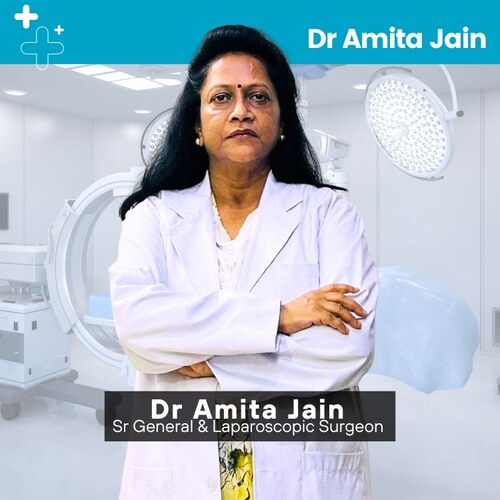Answers leading Female Surgeon Dr Amita Jain
What are Haemorrhoids or Piles?
Haemorrhoids are enlarged and swollen veins (also called varicose) around the outside of the last part of the digestive tract, through which solid waste exits the body. Haemorrhoids can be caused in a number of ways, most commonly by straining to make a bowel movement, old age, pregnancy, poor diet, and being overweight. Everyone has hemorrhoidal tissues, made up of blood vessels, connective tissue, and muscles. These “tissues” don’t always become enlarged, but as we age or in certain health conditions, it does, causing the condition – haemorrhoids or piles.
Types of Haemorrhoids or Piles?
Internal Haemorrhoids develop inside the rectum (the part of the large bowel leading to the anus) and are not usually visible to the naked eye. Internal haemorrhoids generally don’t hurt, but they often bleed painlessly.
External Haemorrhoids develop under the skin around the outside of the anus. These are the most uncomfortable haemorrhoids and can be itchy or painful, and may feel lumpy.
Signs and Symptoms of Haemorrhoids
- Blood in the toilet bowl or in toilet paper after a bowel movement is one of the primary symptoms of haemorrhoids.
- Recurring or frequent itching in the anal area
- Pain in the anal area, especially when sitting and during bowel movements – One or more hard, painful lumps around the anus
- Note – If you experience any of these haemorrhoid symptoms, avoid excess straining, rubbing, or cleaning around the anus, which can make irritation and itching worse, and can even lead to bleeding.
Causes and Risk Factors of Haemorrhoids Several conditions and habits that commonly trigger haemorrhoids
- Chronic constipation or diarrhoea
- Straining too hard during bowel movements
- Sitting on the toilet for a long time Factors that raise your risk of developing haemorrhoids:
- Poor diet intake, especially low fibre diet.
- Obesity: Being overweight can put pressure on the hemorrhoidal tissue.
- Aging: As we get older, the connective tissue in the rectum and anus becomes weaker, potentially resulting in bulging hemorrhoids.
- Pregnancy: As the fetus grows and puts pressure on the abdomen, the veins in the rectum and anus may become enlarged.
Dr Amita Jain, a leading laparoscopic surgeon and one of the best surgeons for painless laser piles surgeries in Delhi and India. She provides in-office, non-surgical treatment alternatives, for treating haemorrhoid banding for swollen or inflamed veins in the anus, lower rectum.
Dr Amita Jain has received special training in the usage of modern-day latest technologies and has successfully treated a large number of patients across India. Dr Amita Jain provides a variety of haemorrhoid treatments depending on the severity of the condition. Dr Amita Jain says topical medications and a healthier diet could help alleviate the symptoms in mild cases. In other scenarios, laser haemorrhoid treatment, haemorrhoid banding, or, rarely done surgery to physically remove the haemorrhoids could be performed.

Dr Amita Jain is one of the most experienced and highly skilled general and laparoscopic surgeons in Delhi and India. Known for her exceptional surgical precision and patient-first approach, she offers expert care across a wide range of procedures, using both open and minimally invasive techniques to ensure faster recovery and better outcomes. Dr Amita Jain holds 28 plus years of rich experience in Trauma and General Laparoscopic Surgeries (including Gallbladder stone removal, appendix removal, hernia repair surgery, piles and fissure surgeries). She was the Professor Surgery of at the Army College of Medical Sciences. In 1994 she was commissioned as Surgeon under the United Nations Mission in Congo. From 2020 to 2022, she worked with Bansals Hospital. Currently, Dr Amita Jain is the Sr. General and Laparoscopic Surgeon at Rainbow Children Hospitals, Malviya Nagar, Delhi.
As a top female surgeon in Delhi, Dr Amita Jain brings decades of experience, compassion, and a commitment to surgical excellence. She has undergone advanced training in trauma surgery and has successfully performed numerous complex procedures, including life-saving surgeries, vascular repairs, mangled limb reconstructions, and critical care surgeries. Whether it’s a planned surgery or an emergency situation, patients across Delhi trust Dr Amita Jain for her expertise, integrity, and results-driven approach to general and laparoscopic surgery.
Call Us at +(91) 882-6615301